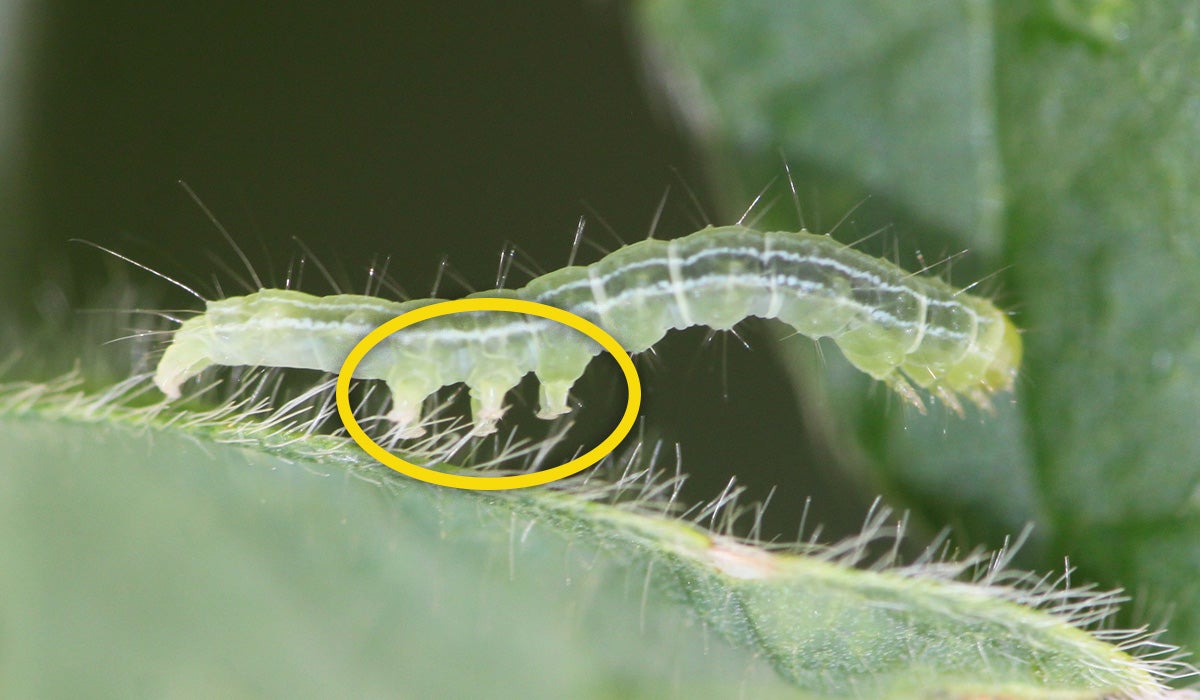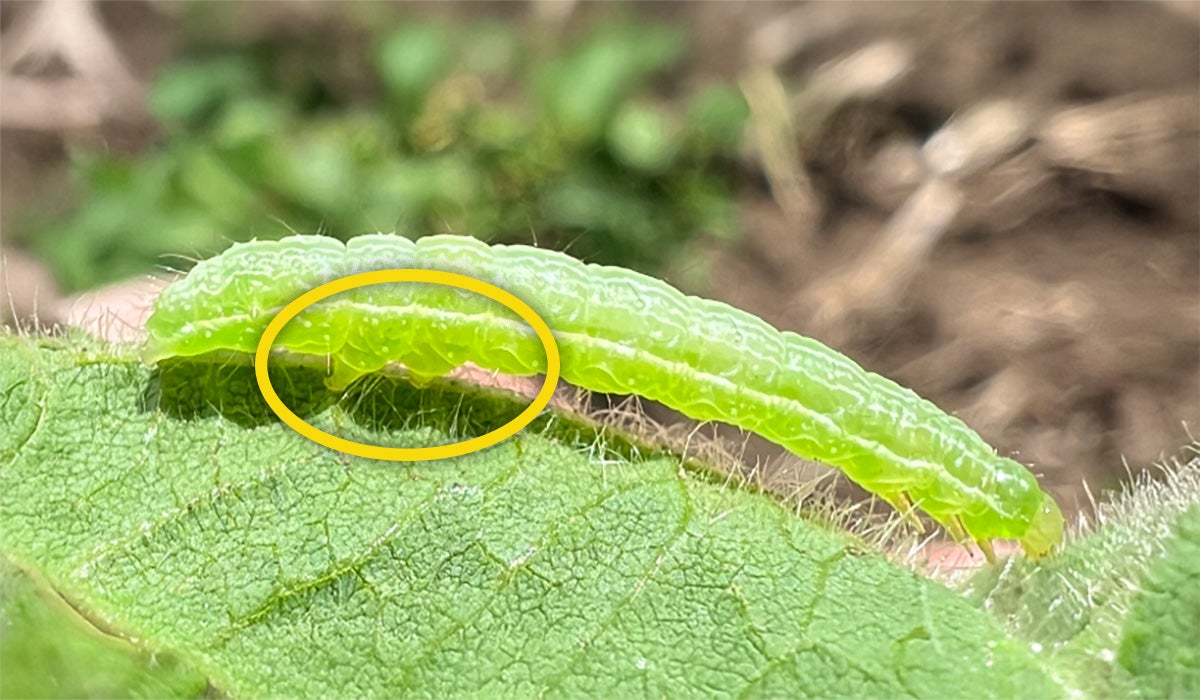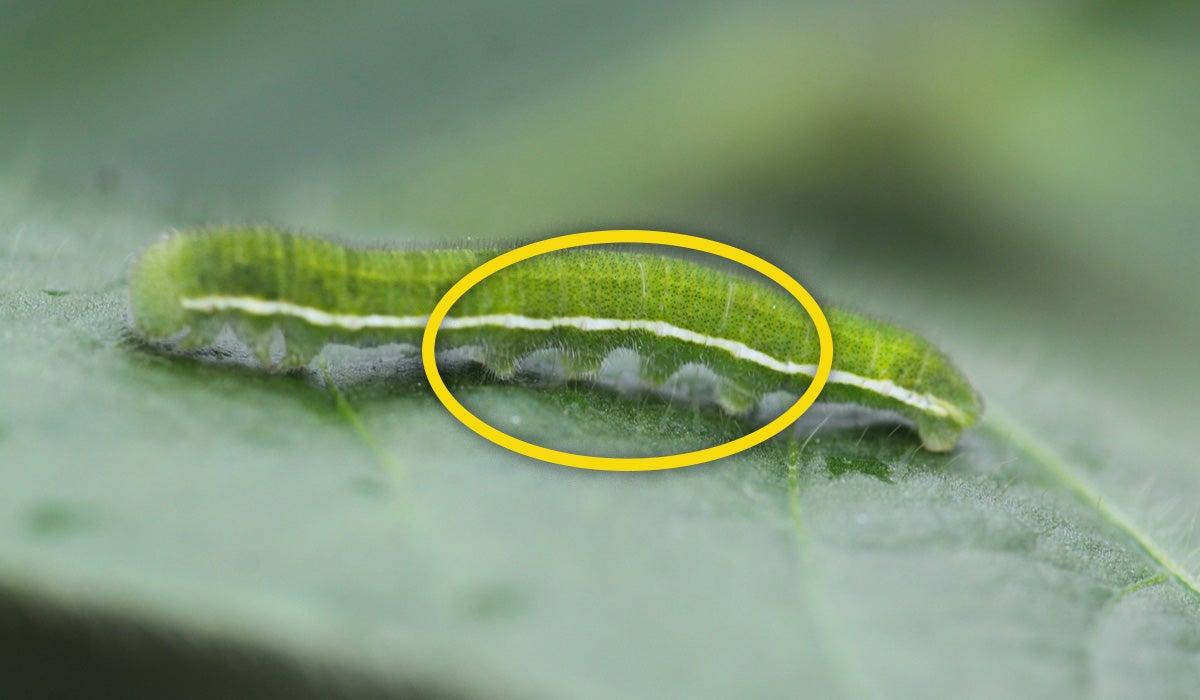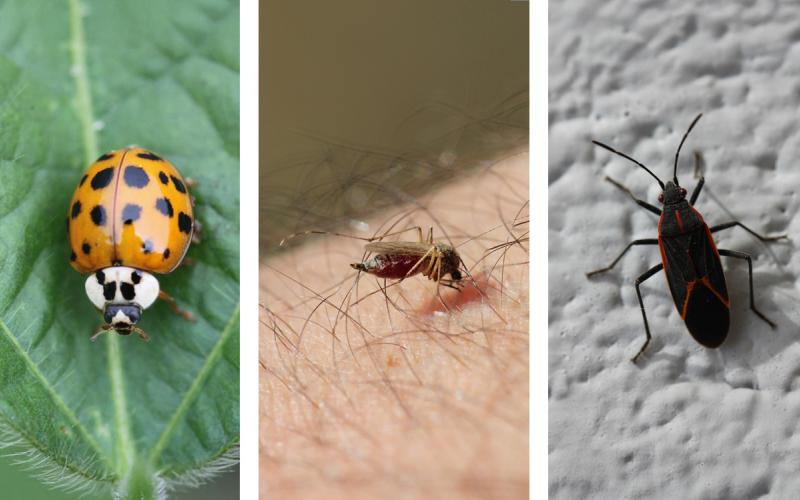Written collaboratively by Adam Varenhorst, Philip Rozeboom, Patrick Wagner, and Brad McManus.
This week we observed several species of caterpillars in soybean fields. The most common species were the green cloverworm (Figure 1) and the cabbage looper (Figure 2). Another green caterpillar that is pretty common in soybean during this time of year is the alfalfa caterpillar (Figure 3).
Caterpillar Identification
Green Cloverworm

Green cloverworm caterpillars are green, and they have a white stripe on each side of their bodies along with three pairs of abdominal prolegs, as noted by the yellow circle in Figure 1.
Cabbage Looper

Cabbage looper caterpillars are green with a white stripe on each side of the body and two pairs of abdominal prolegs. They look very similar to soybean looper caterpillars, but the cabbage looper will have green thoracic legs (close to the head) whereas the soybean looper has black thoracic legs.
Alfalfa Caterpillars

The alfalfa caterpillars are green, have a velvety appearance with a white stripe on each side of the body. They also have four abdominal prolegs as noted by the yellow circle in Figure 3.
Management Considerations
There is currently not enough defoliation present in soybean to warrant an insecticide application to reduce the caterpillar populations. Because there are numerous caterpillar species present, we recommend using a defoliation threshold and not thresholds for the individual species of defoliators.
For soybean, the threshold for defoliation is an average of 30% defoliation prior to flowering and an average of 20% defoliation after flowering has begun. In South Dakota, quite a few of the soybean fields have now reached flowering or R1. These fields should be scouted routinely to ensure that defoliation doesn’t exceed the threshold. If the defoliation threshold is eventually reached, please refer to the current South Dakota Pest Management Guide: Soybeans for a list of insecticides labeled for soybean. Always refer to labels for rates. Also, make sure that all the target pests are listed on the label.


